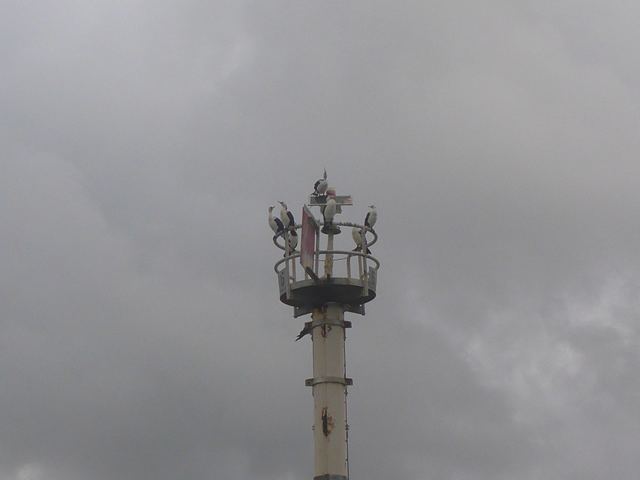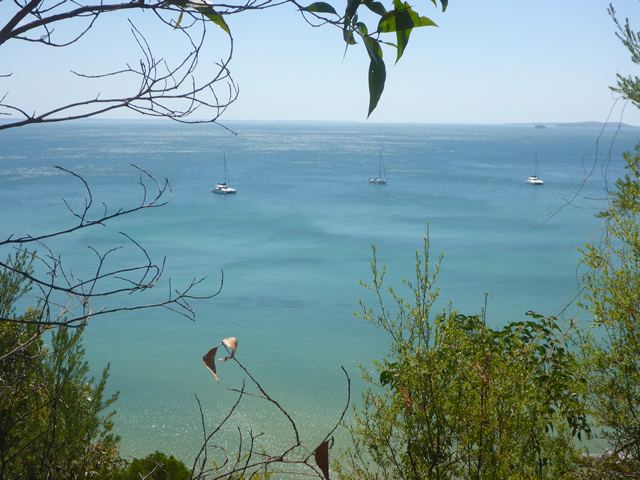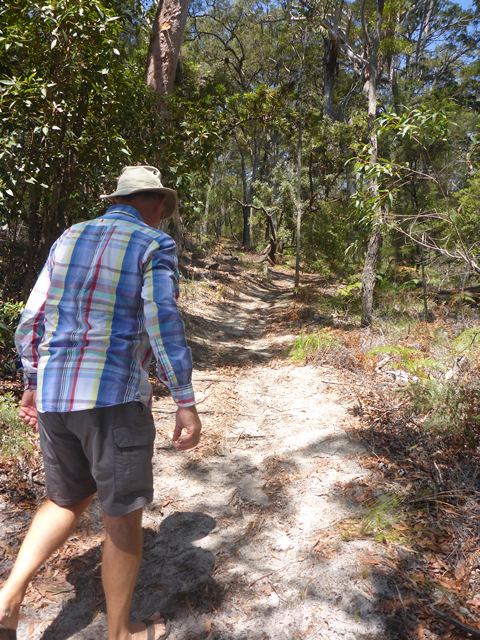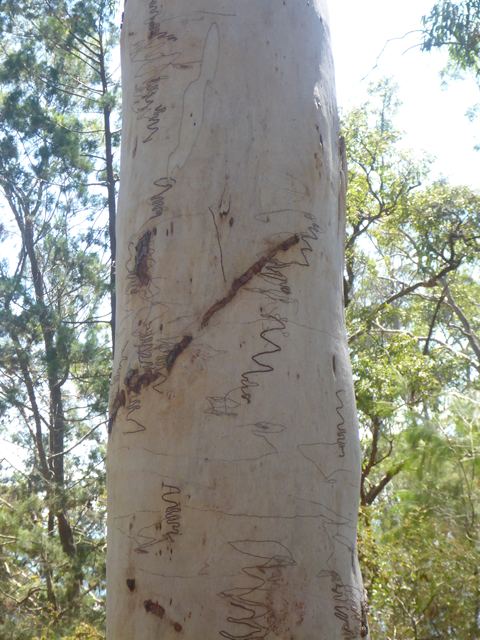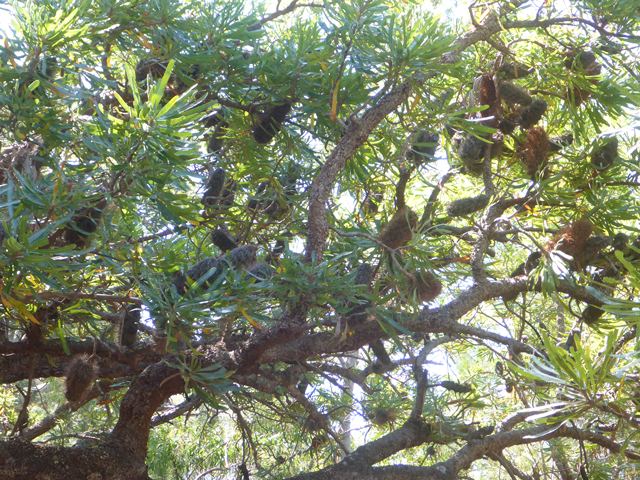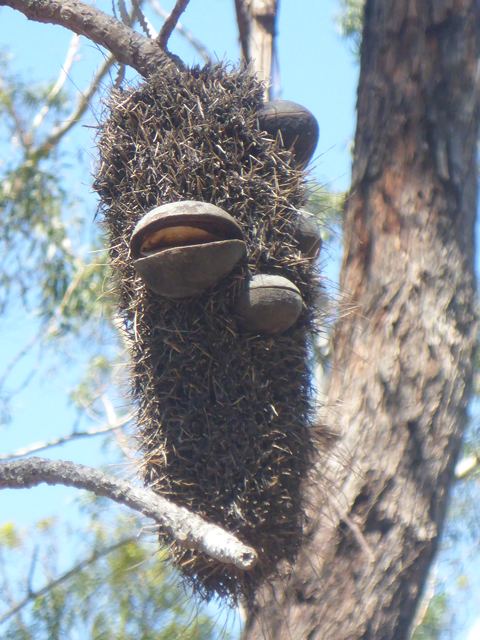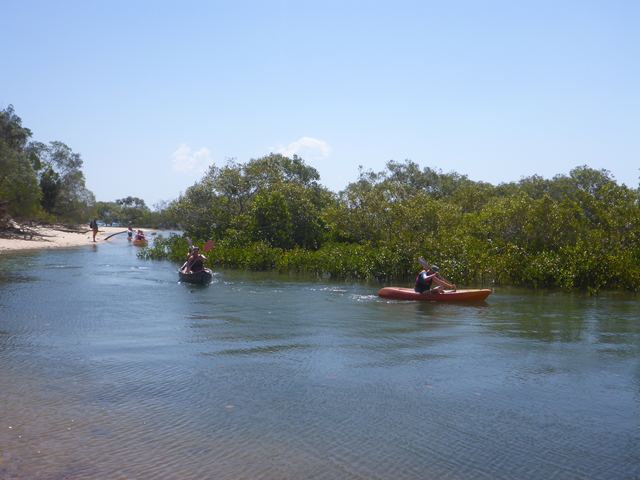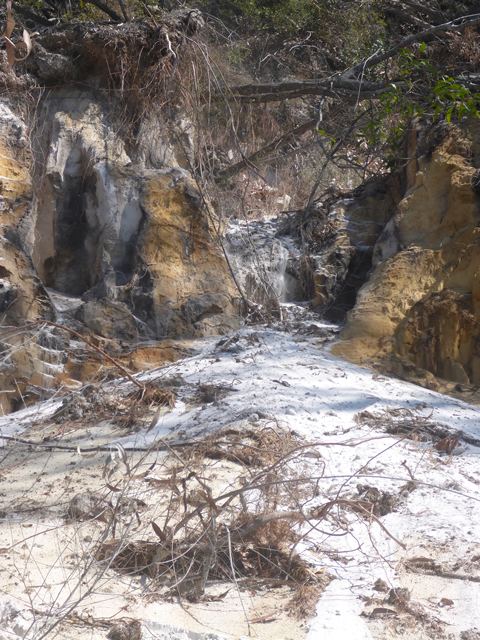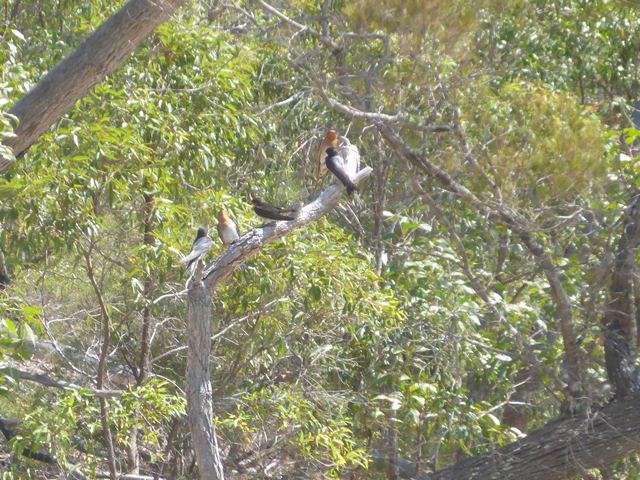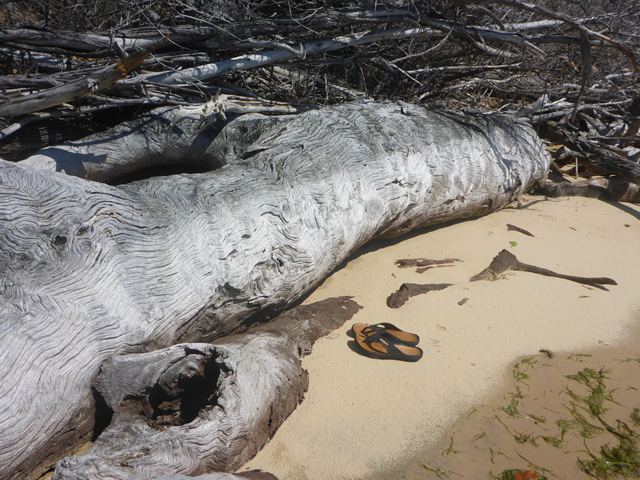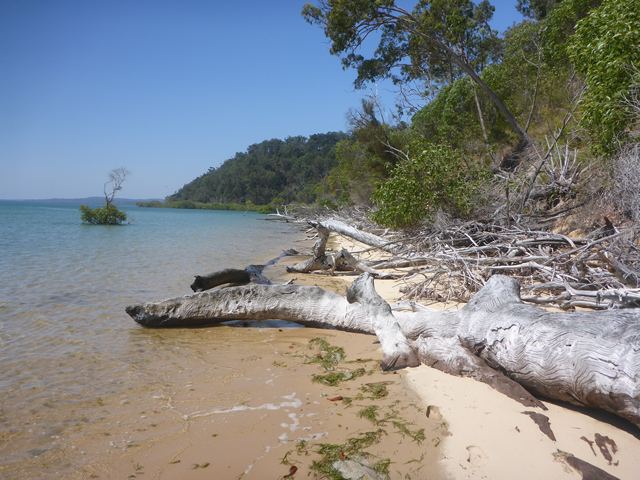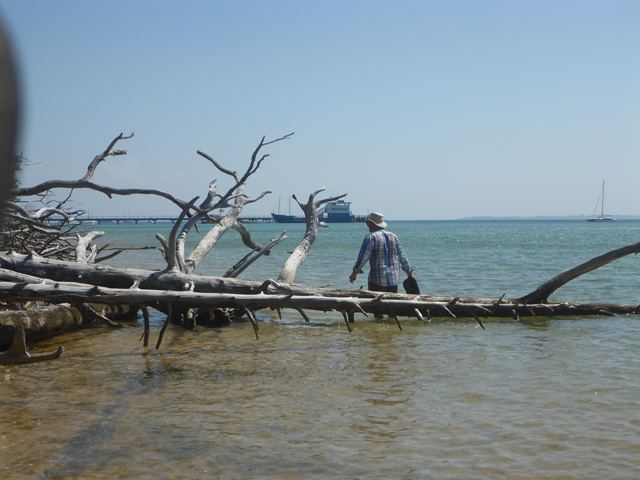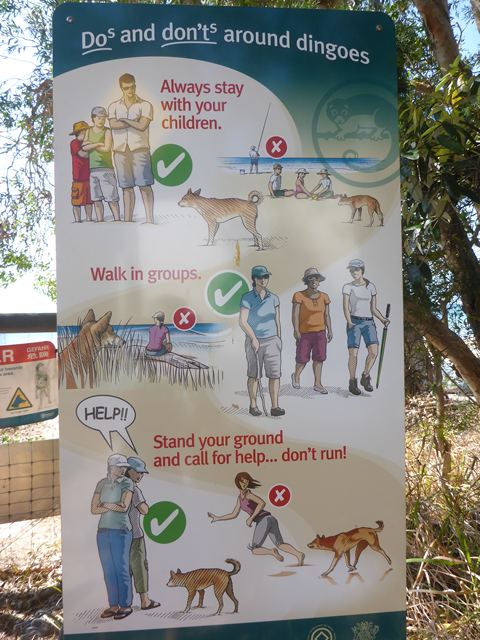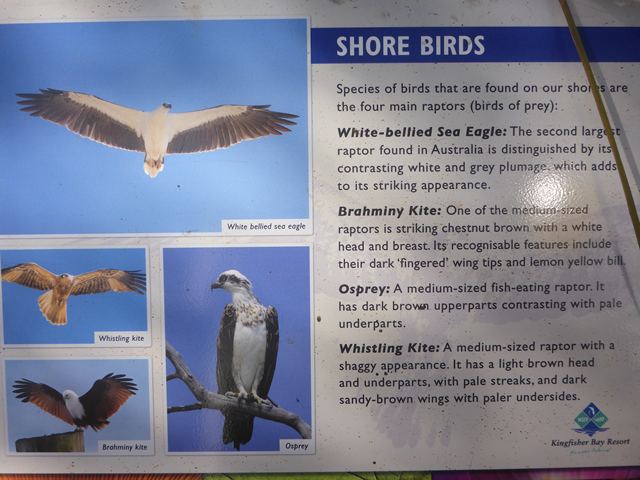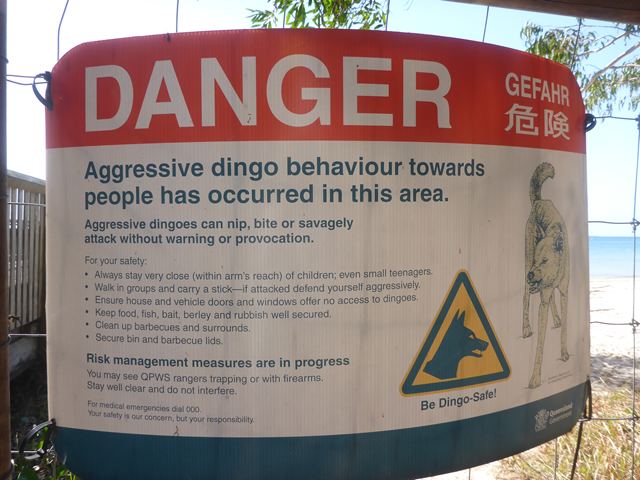2019 Aus Lets Get Things Strait

|
Let’s Get Things Strait Zoonie heads for The Great Sandy Strait 25:13.93S 152:59.64E The shags on the fairway Navigation Marker were still either asleep or yawning as we passed by and shortly afterwards Zoonie was under full sail and heading directly for the northern entrance to the Great Sandy Strait at 5.1 knots in sunshine and under a clearing sky. We had an easy 23 miles to go to the fairway buoy, a nice little hop to regain confidence in the steering system. (As a little aside, the pretty little river fish we saw in New Caledonia I think is a type of Hardyhead; Jack Pollard’s book The Complete Guide to ((Australasian Sea and River)) Fish was very helpful. His photo shows a similar size and shape of fish with slightly different spots but the most telling clue was his saying it is sometimes referred to as the pretty fish.) On Sunday the 20th May 1770 Captain to be, James Cook and his loyal crew in the good ship Endeavour were heading north and passing the tip of Breaksea Spit as he named it, which runs NNW from the top end of Fraser Island, then known by the aborigines as K’gari and only named Fraser Island long after Cook’s passing by. He had just named Sandy Cape at the top of Fraser and shortly before that, Indian Head, “a black bluff head or point of land, on which a number of Natives were Assembled, (James’ capitals) which occasioned my naming it Indian Head.” By the afternoon of the next day they were near to clearing the east side of Breaksea Shoal when Cook sent a boat ahead to sound the bottom and thus chart the northern extent of the spit. When we were planning our route to Bundy with the help of Cook’s work, the pilot book and available advice we determined that a safe passage in would be between Lady Elliot and Lady Musgrave Islands to keep us well away from this dangerous patch of water. By the evening on Cook’s voyage they were well in to Hervey Bay that we were crossing on our trip, Cook heading NW while we pointed SSE. “We discover’d from the Mast head land to the Westward, and soon after saw smooke (smoke) upon it.” We were seeing Booby birds socialising with the shags, and hoping they would not want to land upon Zoonie for reasons you will well understand but Cook came up with the surprising comment, “For these few days past we have seen at times a sort of Sea fowl we have no where seen before that I remember; they are of the sort called Boobies. Before this day we seldom saw more than 2 or 3 at a time, and only when we were near the land. Last night a small flock of these birds passed the Ship and went away to the North-West, and this morning from half an hour before sunrise to half an hour before, flights of them were continually coming from the North-North-West, and flying to the South-South-East, and not one was seen to fly in any other direction. From this we did suppose that there was a Lagoon, River, or Inlet of Shallow Water to the Southward of us, where these birds resorted to in the day to feed, and that not very far to the Northward lay some Island, where they retired to in the night.” He was right about the river, inlet or lagoon and that is to where we were heading. Cook’s next landing was 46 miles north of Bundaberg, at 5.00pm the next day they were “abreast of the South point of a Large open Bay where I intended to Anchor.” I like his professional use of capitals for nautical terms. Endeavour anchored in Bustard Bay named as such by Cook because of the numerous birds of that type in the area, in particular the 17.5lb bird that graced their table that night. So Zoonie was effectively off on the first day of her semi-circumnavigation of Australia which will take about a year before we leave next October from Dampier to cross the Indian Ocean. Not before we spend three months or so back home of course. Flocks of shearwater and terns fished together as we crawled up the shallow channel to anchor off Sandy Point with some very threatening cloud banks gathering in the distance. The wind was fresh but a sand bar protected us from swell and waves and Zoonie sat happily while we watched an intermittent mixture of sheet lightning over the mainland while listening to the England v Wallabies Rugby match in the Oweta Stadium, Japan on our little black tranny. We beat them 40-16. In the morning three little birds, either Tree Martins or Welcome Swallows were sitting on our handrail as I emerged to inspect the day. We made our way southwards towards Kingfisher anchorage where there is a resort and more protection from the fresh SE winds. The scenery around us was so similar to The Solent between the Isle of Wight and Southampton Water that I wondered if Cook had explored into the waterway he accurately guessed was there, would he have agreed. The tides behave exactly the same as in the Solent which was a comfortable familiarity. The rise and ebb happens at both ends meeting at Boonlye Point here and Cowes in the Solent. The Great Sandy Strait is longer than the Solent providing around 40 miles of enclosed waterway while the Solent has just over 30 miles but the same brisk transit can be enjoyed by entering one end at the start of the rise and exiting the far end during the ebb, favourable tide all the way! The channels were easy to follow on the tablet that acts as a copy of the chartplotter in the cockpit and we gave ourselves the advantage of deep water by travelling two hours before high and anchored north of the little jetty in 6.6 metres knowing the tides were approaching the Spring Tides and the water would drop around 2 metres. We were expecting strong winds the next day, up to 50 knots, so Rob let out 35 metres of chain giving her a longer take up time on the chain curve, catenary, which might exceed the duration of gusts and to put more weight overboard. We also had to factor in the direction in which the wind would push her and make sure we were sufficiently far from the sandy beach to not bottom on an ebbing tide. Ooooh no thanks. We went quickly to the resort to book our planned guided day excursion the next day and then took a leisurely stroll up through the wooded hill beside the resort for a fine look down on Zoons in her anchorage; always a pleasure. The photo you see of the shrub with the curious bottlebrush-like fruits is the Banksia named by Cook after his friend, patron and botanist Joseph Banks who was 27 when they passed up the coast. The ‘intrepid’ canoists on holiday at the resort reminded us of our mangrove kayak tour back in Guadeloupe. We knew the tide would be high giving us little or no beach to walk back along, but we didn’t care, clambering over the fallen tree trunks up to our knees in cool water was an unexpected pleasure. A perfect round off was a cool beer in the shady little bar where the jetty comes ashore.
|
